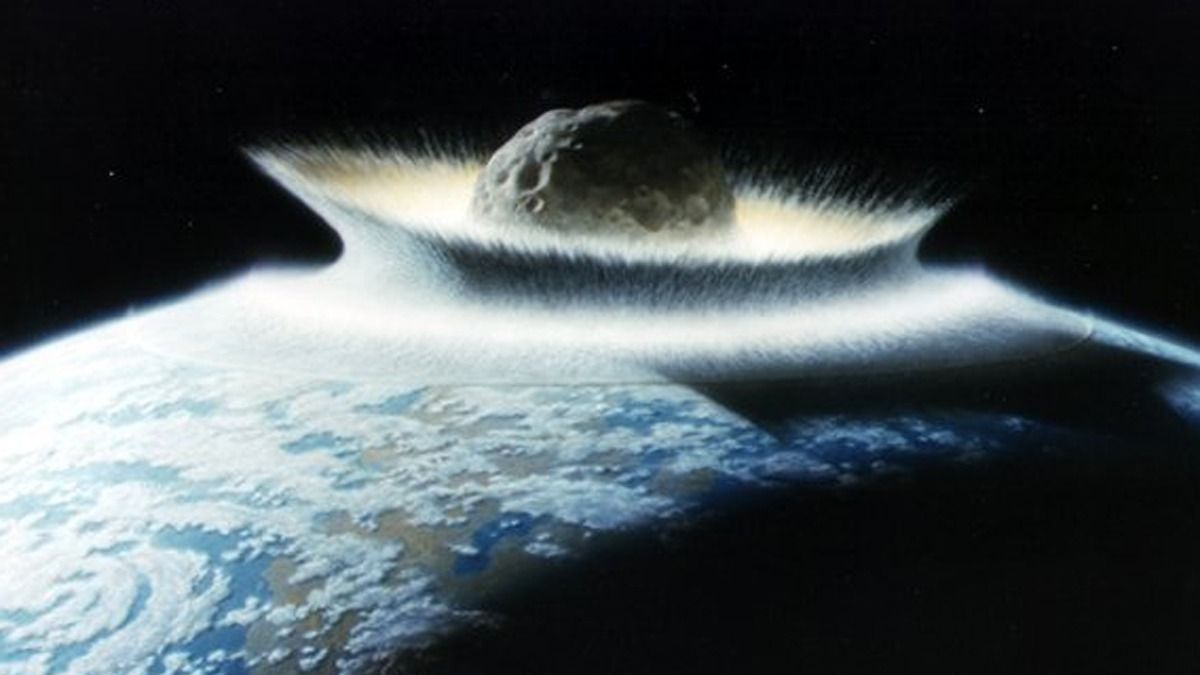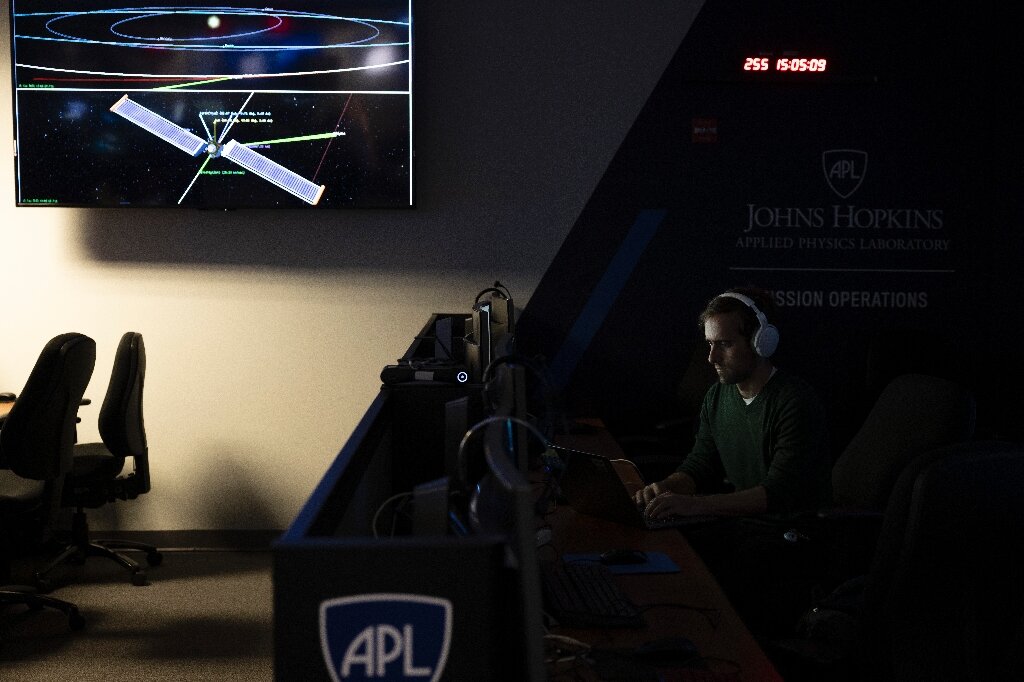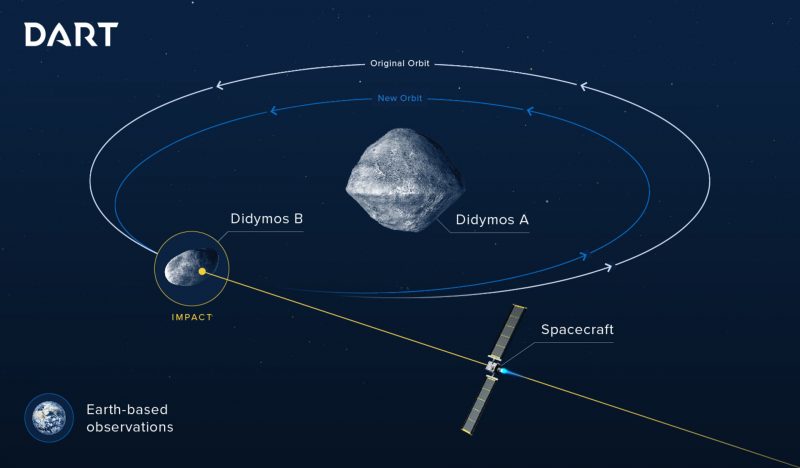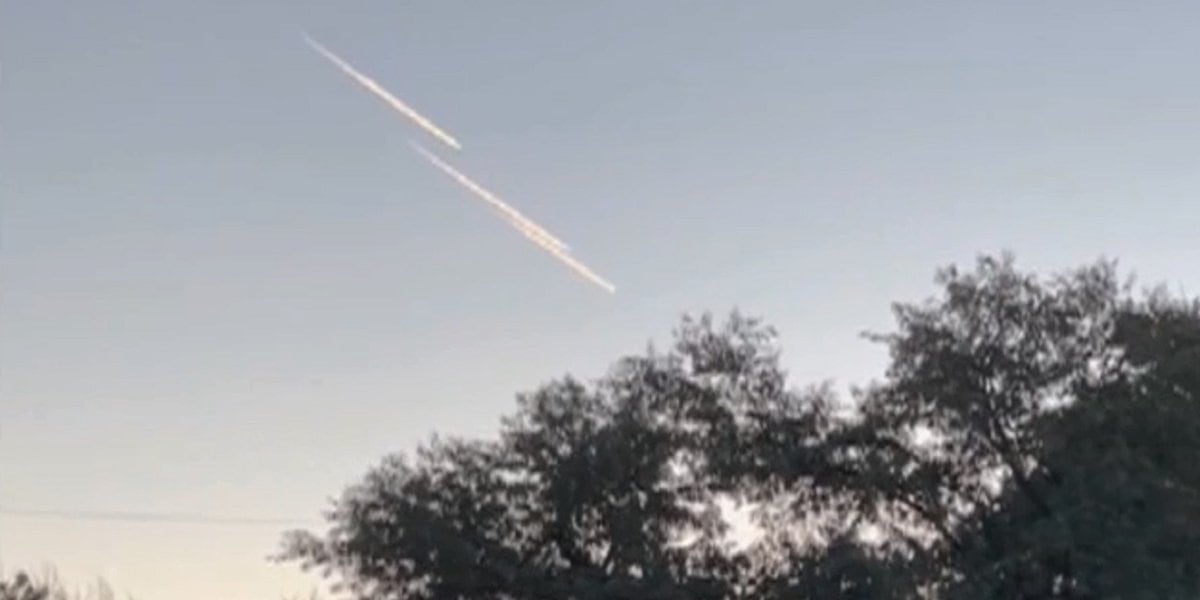Meteorite captured streaking across the sky in southern Scotland and northern England. Also reported to have been seen from Northern Ireland.
You are using an out of date browser. It may not display this or other websites correctly.
You should upgrade or use an alternative browser.
You should upgrade or use an alternative browser.
Near-Earth objects and close calls
- Thread starter Gawan
- Start date
"They" make it seem that this theory has the possibility of avoiding the inevitable.
But what if there are many large space rocks all at once? Does it seem that the Lucy Mission team representatives appear oblivious to being flexible? With keeping an open-minded approach with considering all possibilities within the realm of the billiard ball approach may even fail.

 www.space.com
By Elizabeth Howell published 12 days ago
www.space.com
By Elizabeth Howell published 12 days ago
But what if there are many large space rocks all at once? Does it seem that the Lucy Mission team representatives appear oblivious to being flexible? With keeping an open-minded approach with considering all possibilities within the realm of the billiard ball approach may even fail.

Fiery ancient asteroid impacts turned living things into charcoal
The dramatic ends of ancient microbes reveal clues of asteroid impacts.
C/2022 R2 is a recently discovered comet with a preliminary orbit that passes within 0.05 AU of Earth’s orbit. D criterion assessment suggests that this comet has the potential to lead to an annual radiant in the heart of Lepus around November 22nd to 24th.
Introduction
Today (20/09/2022) the Central Bureau for Astronomical Telegrams released a discovery notice inclusive of orbital elements for the newly discovered comet designated C/2022 R2 Atlas (Green & Nakano 2022). On the same day MPEC S87 was released containing astrometry from several sources (see MPC Staff, 2022) covering a roughly 5 day arc of this long period comet’s orbit.
Discussion
The current orbit is still somewhat preliminary but given no major changes going forwards this small Halley Type comet with a highly eccentric orbit will pass closest to Earth at roughly 1 Astronomical Unit (AU) on its way to a 0.628 AU perihelion on October 25th 2022 for the first time in around 220 years. The orbit is such that the comet’s ascending node lies within roughly 0.05 AU of the Earth’s orbit, and the comet was already at that point in during its September 14th 2022 discovery. The Earth itself will later pass the projection of this point around the 20th to 25th of November 2022. Given the current preliminary nature of the orbit all values are being expressed somewhat roughly.
A potential shower radiant’s particulars will be in the heart of Lepus near Right Ascension 84 degrees and Declination -20 degrees, the radiant should be active centred around Solar Longitude 240.2 degrees, or 19 hours on November 22nd 2022 UT, with the meteors being of medium speed with geocentric velocity of around 38 km/s.
However, as said, this comet is on a return to the inner Solar System for the first time in at least two centuries or so and although the comet did pass near Earth’s orbit before Earth itself it was still 1 AU from the Sun at that time and around five to six weeks prior to perihelion. In which case any particles ejected from the comet will not really have had enough time to cross the Earth orbit’s path. The same date in 2023 would give an extra year for such to occur.
Indeed, there are often predictions based on cometary orbits in the current era that do not come to pass and it may take many years for any meteoroids from this comet, if any at all, to hit the Earth’s atmosphere. On the other hand, the Southworth and Hawkins (1963) D criterion value for an Earth crossing shower is around 0.04 which in itself is promising given there being any actual meteoroids to be presented.
Examination of a collection of nearly two million meteor orbits of various derivation, both published and in the in the public domain, revealed only 7 candidates when seeded with the comet’s preliminary orbit for a period spanning from 2008 to 2021 inclusive, with none before then, some years providing none during that span, some years providing one, and, only 2021 providing 2 candidates. All of these could therefore be simply coincidental sporadics. Although given this is likely a small and indistinct comet, as it will never be much brighter than magnitude 15 at its best (barring any outbursts which would be occurring after the nodal passage thus therefore not likely to lead to any meteor activity before 2023 at the very earliest, with none guaranteed even then) it is possible that any meteoroids derivable from its last apparition are already long dispersed.
Meanwhile any potential 2022 activity at least has the rare decency to coincide with a virtually New Moon.
Conclusion
In the modern era potential meteor showers either freshly occurring due to or enhanced by comet passages can often be predicted. Whether they occur or not is another matter. C/2022 R2 has a preliminary 5 day arc orbit pointing to a potential of an annual meteor radiant with Solar Longitude 240.2 degrees emanating from the constellation of Lepus near 84 degrees Right Ascension and -20 degrees Declination, with a geocentric velocity of around 38 km/s.
Although the comet has already passed the point in its orbit closest to the Earth’s orbit both roughly five to six weeks prior to its perihelion and roughly nine to ten weeks before the Earth reaches that point in its own orbit, there is a chance for enhanced meteor activity in Lepus around November 22nd to 23rd (add one to each date for leap years) from 2022 onwards. Current meteor orbit datasets suggest that there is currently no real activity in the heart of this constellation at around that time.
Any activity would be likely to be picked up during current multistation meteor surveys as a matter of routine, given sufficient brightness.
Acknowledgement
This research has made use of data and/or services provided by the International Astronomical Union’s Minor Planet Center.
References
Green W. E., Nakano, S. (2022), “COMET C/2022 R2 (ATLAS)”.
http://www.cbat.eps.harvard.edu/iau/cbet/005100/CBET005171.txt
Jopek T. J. (1993). “Remarks on the meteor orbital similarity D-criterion”. Icarus, 106, 603–607.
MPC Staff (2022) “COMET C/2022 R2 (ATLAS)”.
NASA gears up to deflect asteroid, in key test of planetary defense
(September 26 at 7:14pm Eastern Time (2314 GMT)
"The Double Asteroid Redirection Test (DART) spaceship launched from California last November and is fast approaching its target, which it will strike at roughly 14,000 miles per hour (23,000 kph)."
"If all goes to plan, impact between the car-sized spacecraft, and the 530-foot (160 meters, or two Statues of Liberty) asteroid should take place on September 26 at 7:14pm Eastern Time (2314 GMT), and can be followed on a NASA livestream."
Article:

NASA gears up to deflect asteroid, in key test of planetary defense
Bet the dinosaurs wish they'd thought of this.
A live starry sky camera on Mauna Kea, Hawaii Island, captured the appearance of a fireball near the eastern horizon on September 21, 2022, at 21:49:33 local time. The fireball itself is blocked by the dome of the Keck telescope, but the image shows the sky brightening. Translated with Deepl
Upcoming Earth-asteroid encounters (last week of September)
M.D: miss distance
LD: Lunar Distance (distance from the center of Earth to the center of the Moon, approximately 400,000 km)
VEL: Velocity (Km/s)
DT: Diameter (m)
SpaceWeather.com
Upcoming Earth-asteroid encounters (last week of September)
| Asteroid | Date (UT) | M.D. | VEL | DT |
| 2022 SW3 | 2022-Sep-23 | 7.2 LD | 8.7 | 38 |
| 2022 QK36 | 2022-Sep-23 | 18.7 LD | 3.7 | 22 |
| 2022 SP | 2022-Sep-24 | 9.2 LD | 9.8 | 13 |
| 2022 SK | 2022-Sep-24 | 18.1 LD | 16.6 | 50 |
| 2022 RM | 2022-Sep-25 | 14.2 LD | 10 | 31 |
| 2022 SK6 | 2022-Sep-25 | 2.7 LD | 3.9 | 11 |
| 2022 SL1 | 2022-Sep-25 | 9.3 LD | 8 | 22 |
| 2022 SU1 | 2022-Sep-25 | 4 LD | 14 | 16 |
| 2022 SE6 | 2022-Sep-26 | 4 LD | 4.2 | 24 |
| 2022 SR4 | 2022-Sep-26 | 7.9 LD | 11 | 24 |
| 2022 SY4 | 2022-Sep-26 | 2.4 LD | 11.8 | 10 |
| 2022 SY2 | 2022-Sep-27 | 18.8 LD | 12.8 | 46 |
| 2022 SZ2 | 2022-Sep-27 | 1.5 LD | 3.6 | 10 |
| 2022 ST3 | 2022-Sep-27 | 18 LD | 17.5 | 32 |
| 2022 SD4 | 2022-Sep-27 | 10.7 LD | 9.8 | 18 |
| 2022 SP4 | 2022-Sep-27 | 15.6 LD | 13.2 | 52 |
| 2022 SO4 | 2022-Sep-28 | 13.6 LD | 11.5 | 27 |
| 2022 SP1 | 2022-Sep-28 | 19 LD | 4.6 | 20 |
| 2022 SZ | 2022-Sep-28 | 13.7 LD | 7.4 | 18 |
| 2022 SR1 | 2022-Sep-29 | 12.1 LD | 6 | 25 |
| 2016 HF2 | 2022-Sep-29 | 19.2 LD | 5.6 | 21 |
M.D: miss distance
LD: Lunar Distance (distance from the center of Earth to the center of the Moon, approximately 400,000 km)
VEL: Velocity (Km/s)
DT: Diameter (m)
SpaceWeather.com
Meteor in Japan
This is a wide-angle camera shot from my house in Hiratsuka, Japan, looking southwest, capturing a long meteor streaming at 10:45:14 p.m. on September 25, 2022. It was not bright enough to be called a fireball, but it glowed slowly for more than 4 seconds. It was a scattered meteor. (T.Deepl)
Upcoming Earth-asteroid encounters (Updated September 26-30)
M.D: miss distance
LD: Lunar Distance (distance from the center of Earth to the center of the Moon, approximately 400,000 km)
VEL: Velocity (Km/s)
DT: Diameter (m)
SpaceWeather.com
This is a wide-angle camera shot from my house in Hiratsuka, Japan, looking southwest, capturing a long meteor streaming at 10:45:14 p.m. on September 25, 2022. It was not bright enough to be called a fireball, but it glowed slowly for more than 4 seconds. It was a scattered meteor. (T.Deepl)
Upcoming Earth-asteroid encounters (Updated September 26-30)
| Asteroid | Date (UT) | M.D. | VEL | DT |
| 2022 SE6 | 2022-Sep-26 | 4 LD | 4.2 | 25 |
| 2022 SR4 | 2022-Sep-26 | 7.9 LD | 11 | 24 |
| 2022 SY4 | 2022-Sep-26 | 2.4 LD | 11.8 | 10 |
| 2022 SY2 | 2022-Sep-27 | 18.8 LD | 12.8 | 46 |
| 2022 SZ2 | 2022-Sep-27 | 1.5 LD | 3.6 | 10 |
| 2022 ST3 | 2022-Sep-27 | 18 LD | 17.5 | 32 |
| 2022 SD4 | 2022-Sep-27 | 10.7 LD | 9.8 | 18 |
| 2022 SP4 | 2022-Sep-27 | 15.6 LD | 13.2 | 52 |
| 2022 SO4 | 2022-Sep-28 | 13.6 LD | 11.5 | 27 |
| 2022 SP1 | 2022-Sep-28 | 19 LD | 4.6 | 20 |
| 2022 ST7 | 2022-Sep-28 | 10.8 LD | 5.2 | 30 |
| 2022 SZ | 2022-Sep-28 | 13.7 LD | 7.4 | 18 |
| 2022 SR1 | 2022-Sep-29 | 12.1 LD | 6 | 25 |
| 2016 HF2 | 2022-Sep-29 | 19.2 LD | 5.6 | 21 |
| 2022 SJ9 | 2022-Sep-29 | 3.2 LD | 9.9 | 14 |
| 2022 SU7 | 2022-Sep-30 | 1.9 LD | 4.9 | 7 |
M.D: miss distance
LD: Lunar Distance (distance from the center of Earth to the center of the Moon, approximately 400,000 km)
VEL: Velocity (Km/s)
DT: Diameter (m)
SpaceWeather.com
DART zeros in on an asteroid
DART – the Double Asteroid Redirect Test – is zeroing in on its target. DART is the first real test of our ability to defend ourselves from an asteroid on a collision course with Earth. For this test, DART is targeting Didymos B – aka Dimorphos – a little asteroid moon that’s just 525 feet (160 m) in diameter. It’ll strike the little asteroid – hoping to nudge it slightly off-orbit – at 7:14 p.m. ET (23:14 UTC) on Monday, September 26, 2022. NASA will begin its coverage of the DART impact at 6 p.m. ET (22 UTC) on September 26 on the agency’s website. NASA will also hold a post-event briefing to discuss what happened.You can also watch the DART asteroid impact via Facebook, Twitter and YouTube (looks like the livestream on YouTube is not yet posted, as of 6 a.m. ET (10 UTC) on September 26).

| EarthSky
I came across this 'fireball' video from Colorado Springs and then looked in the forum to see if anyone had posted it. Since I couldn't find it, I thought it best to add it here. The funny thing is the 'explanation' for them. Mystery solved? Are they really just jet bombers?
Mystery solved for what the 3 ‘fireballs’ were spotted from Colorado this week

 www.kktv.com
www.kktv.com
[image]
[video]
Video taken 9/20/22 6:45 am. Objects were visible from Hartsel to Calhan Colorado according to 11 News Viewers. 11 News is working to find out what they are.
By Tony Keith
Published: Sep. 20, 2022 at 5:35 PM EDT|Updated: Sep. 23, 2022 at 2:36 PM EDT
COLORADO SPRINGS, Colo. (KKTV) - Multiple people started reaching out to KKTV 11 News on Tuesday after they witnessed three objects in the sky that were visible from areas of Colorado.
One viewer, who shared photos with KKTV 11 News, explained he could see three “huge fireballs” in the sky from Hartsel while he was looking east toward Colorado Springs at about 6:38 in the morning. He added that he was able to watch the objects for about 10 minutes before they were out of sight. Video and pictures of the objects from a distance can be viewed at the top of this article.
After 11 News started receiving more videos and photos, we started reaching out to local military installations for answers. Tuesday evening, no one could identify the objects.
11 News also reached out to the National Weather Service (NWS) in Pueblo. An official with the NWS said they did pick something up on radar in an area east of Colorado Springs, but they were not able to identify the objects. Someone with the National Oceanic and Atmospheric Administration (NOAA) told 11 News they would be checking with the Space Center to see if they were tracking anything Tuesday morning.
On Wednesday, a representative with NOAA got back to 11 News and stated he had heard of other reports that it was simply a convoy of C-17s. However, 11 News received better quality video on Wednesday that helped solve the mystery. A higher-quality video depicting the aircraft can be viewed at the bottom of this article.
The Federal Aviation Administration referred 11 News to the Department of Defense. The Department of Defense couldn’t comment. After calling more military installations in Colorado, we were referred to Air Force Global Strike Command. A representative with Air Force Global Strike Command was able to confirm with the 509th Bomb Wing at Whiteman Air Force Base in Missouri that the objects in question were B-2 Spirit Bombers. Whiteman AFB houses the B-2 Bombers.
Details on what the aircraft were doing in the Colorado area were not available.
[image]
[video]
11 News is still working to confirm what type of aircraft was spotted east of Colorado Springs on 9/20/22. They appear to be Bombers.
Copyright 2022 KKTV. All rights reserved.
Mystery solved for what the 3 ‘fireballs’ were spotted from Colorado this week

Mystery solved for what the 3 ‘fireballs’ were spotted from Colorado this week
Multiple people started reaching out to KKTV 11 News on Tuesday after they witnessed three objects in the sky that were visible from areas of Colorado.
[image]
[video]
Video taken 9/20/22 6:45 am. Objects were visible from Hartsel to Calhan Colorado according to 11 News Viewers. 11 News is working to find out what they are.
By Tony Keith
Published: Sep. 20, 2022 at 5:35 PM EDT|Updated: Sep. 23, 2022 at 2:36 PM EDT
COLORADO SPRINGS, Colo. (KKTV) - Multiple people started reaching out to KKTV 11 News on Tuesday after they witnessed three objects in the sky that were visible from areas of Colorado.
One viewer, who shared photos with KKTV 11 News, explained he could see three “huge fireballs” in the sky from Hartsel while he was looking east toward Colorado Springs at about 6:38 in the morning. He added that he was able to watch the objects for about 10 minutes before they were out of sight. Video and pictures of the objects from a distance can be viewed at the top of this article.
After 11 News started receiving more videos and photos, we started reaching out to local military installations for answers. Tuesday evening, no one could identify the objects.
11 News also reached out to the National Weather Service (NWS) in Pueblo. An official with the NWS said they did pick something up on radar in an area east of Colorado Springs, but they were not able to identify the objects. Someone with the National Oceanic and Atmospheric Administration (NOAA) told 11 News they would be checking with the Space Center to see if they were tracking anything Tuesday morning.
On Wednesday, a representative with NOAA got back to 11 News and stated he had heard of other reports that it was simply a convoy of C-17s. However, 11 News received better quality video on Wednesday that helped solve the mystery. A higher-quality video depicting the aircraft can be viewed at the bottom of this article.
The Federal Aviation Administration referred 11 News to the Department of Defense. The Department of Defense couldn’t comment. After calling more military installations in Colorado, we were referred to Air Force Global Strike Command. A representative with Air Force Global Strike Command was able to confirm with the 509th Bomb Wing at Whiteman Air Force Base in Missouri that the objects in question were B-2 Spirit Bombers. Whiteman AFB houses the B-2 Bombers.
Details on what the aircraft were doing in the Colorado area were not available.
[image]
[video]
11 News is still working to confirm what type of aircraft was spotted east of Colorado Springs on 9/20/22. They appear to be Bombers.
Copyright 2022 KKTV. All rights reserved.
Germany: Fireball seen over Karlsruhe, this September 23, 2022.
Just saw the following on a telegram channel that I've founded interesting and thought to share it here:
Mass-Media News
⚡"There has been a nuclear strike. Don't ask me how or why, but the big trouble has arrived," New York City released a video with instructions for residents in case of a nuclear strike. The city authorities prepared a special video instruction on what to do in case of a nuclear strike...
Pat
Jedi Master
This has been out for a while. Saw it before, might have been this summer or before about how to get ready for a nuclear strikeJust saw the following on a telegram channel that I've founded interesting and thought to share it here:

Mass-Media News
⚡"There has been a nuclear strike. Don't ask me how or why, but the big trouble has arrived," New York City released a video with instructions for residents in case of a nuclear strike. The city authorities prepared a special video instruction on what to do in case of a nuclear strike...t.me
Two Russian observatories have discovered a new asteroid 2022 SE37, approaching Earth. The diameter of the celestial body is about 500 meters, it orbits the Sun in an elongated orbit with a period of 3.44 years and poses no danger to the Earth in the foreseeable future, confirmed the Keldysh Institute of Applied Mathematics of Russia's Academy of Science on its Telegram channel.

 sputniknews.com
By Svetlana Ekimenko - 3 hours ago (Updated: 15 minutes ago)
sputniknews.com
By Svetlana Ekimenko - 3 hours ago (Updated: 15 minutes ago)

Russian Observatories Discover New Asteroid Hurtling Towards Earth
NASA released pictures of its experimental Double Asteroid Redirection Mission (DART) to collide a spacecraft with an asteroid recently, with the agency's science chief hailing the ongoing effort to teach engineers how to "deflect and...
I'd bet they didn't expect such an extreme reaction. Though it was an experiment...

 www.space.com
By Robert Lea published about 7 hours ago
www.space.com
By Robert Lea published about 7 hours ago


New comet Comet ATLAS C/2022 R2 ( ATLAS ) A narrow tail about 3' northwest of the head with strong central condensation 12 mag, brightening. 2022/09/30 28:20:14 (JST) 30.805 (UT) FSQ106+EOS60Da 2m×8 #cometcollection

DART impact gave asteroid Dimorphos a debris tail thousands of miles long (stunning photo)
The latest Science & Astronomy,/science-astronomy,,science-astronomy,science-astronomy breaking news, comment, reviews and features from the experts at Space
A new stunning image shows that two days after NASA's Double Asteroid Redirection Test (DART) spacecraft slammed into the asteroid Dimorphos, the space rock had grown a tail of glowing debris extending thousands of miles.
The comet-like tail is made of dust and debris was blasted from the surface of Dimorphos, part of a double asteroid system, by the intentional impact of DART, the first mission designed to test whether such a collision could divert a hypothetical asteroid threatening to hit Earth. Dimorphos' new tail was imaged by astronomers Teddy Kareta from the Lowell Observatory and Matthew Knight from the U.S. Naval Academy using the 4.1-meter Southern Astrophysical Research (SOAR) Telescope, at the National Science Foundation-funded NOIRLab's Cerro Tololo Inter-American Observatory in Chile.
"It is amazing how clearly we were able to capture the structure and extent of the aftermath in the days following the impact," Kareta said in a statement (opens in new tab).
Related: Here's the last thing NASA's DART spacecraft saw before it crashed
Observing the ejected material could allow scientists to better determine the nature of the surface of Dimorphos by revealing just how much material the collision with DART ejected, the speed at which the material was launched and the size of the ejected particles. This knowledge could ultimately help space agencies like NASA protect Earth from asteroid impacts because a better understanding of asteroid structure and composition helps scientists model how best to divert them.
The material in the dust trail was initially ejected on Sept. 26 when DART hit Dimorphos, forming a cloud around the asteroid. The tail-like structure formed when radiation pressure from the sun pushed the debris away from the body of the asteroid, just as happens with the tails of comets as they approach the sun from the distant reaches of the solar system.
The SOAR image shows Dimorphos' new feature extending from the center of the image to the right-hand edge of the image. Using Dimorphos' distance from Earth at the time the image was captured, the astronomers estimated the tail was around 6,200 miles (10,000 kilometers) long. (Before the impact, scientists estimated that Dimorphos itself was about 525 feet, or 160 meters, wide.)
SOAR will continue to observe the aftermath of the DART impact, collecting data that will help researchers assess how successful this attempt to modify the orbit of an asteroid has been. SOAR is a key member of the Astronomical Event Observatory Network (AEON) of telescopes, which is dedicated to nimbly following up on reports of new astronomical phenomena.
"Now begins the next phase of work for the DART team as they analyze their data and observations by our team and other observers around the world who shared in studying this exciting event," Knight said. "We plan to use SOAR to monitor the ejecta in the coming weeks and months. The combination of SOAR and AEON is just what we need for efficient follow-up of evolving events like this one."
Follow us on Twitter @Spacedotcom and on Facebook.
Cometary Activities of the Hyperbolic Asteroid A/2021 X2 Observed at Lulin Observatory
8 Sep 2022; 04:28 UT via The Astronomer's TelegramWe report ongoing cometary activities of the hyperbolic asteroid A/2021 X2 (hereafter X2) from our optical imaging in August. A weak coma and a faint diffuse tail were observed on the 9th, 20th, 21st, and 24th of August when the heliocentric distance of X2 varied between 3.01 and 3.03 au. The FWHM of X2 is around 2.5" which is twice the mean seeing during the observation. Compared with the syndyne-synchrone dust curve, we suggest the dust ejecta was released more than 200 days ago. X2 appears highly variable due to time-varying coma obscuration. It is on a hyperbolic orbit (e>1) and has recently finished the perihelion passage (q = 2.99 au) in early July. These observations were performed with the Lulin 1-m telescope at Lulin Observatory (MPC code: D35), operated by the Institute of Astronomy, NCU, Taiwan. Observing images, please note that the pixel scale of the images are ~ 0.69".
New comet Comet ATLAS C/2022 R2 ( ATLAS ) A narrow tail about 3' northwest of the head with strong central condensation 12 mag, brightening. 2022/09/30 28:20:14 (JST) 30.805 (UT) FSQ106+EOS60Da 2m×8 #cometcollection
Today is the waxing moon. Last night there was a lunar impact flash, a meteorite falling and shining on the night side of the moon! The flash was at 20:03:24.0 on October 2, 2022. I took this photo from my home in Hiratsuka. It fell on the southwestern periphery of the Moon, at the edge of the eastern ocean. The moon has no atmosphere, so no meteors or fireballs are seen, but instead it glows at the moment of cratering. T.Deepl
This is a shot of meteors captured by a camera facing southeast from Fuji between 10:00 p.m. on September 30, 2022 and 3:00 a.m. on October 2, 2022. October is the peak month for various meteor showers, including the Geminids epsilon meteor shower, the Pisces delta North meteor shower, the Orionids meteor shower, and the Taurids South meteor shower. Especially in this year's Taurids group, fireballs are expected to appear. T.Deepl
Upcoming Earth-asteroid encounters
M.D: miss distance LD: Lunar Distance (distance from the center of Earth to the center of the Moon, approximately 400,000 km)
VEL: Velocity (Km/s)
DT: Diameter (m)
SpaceWeather.com
This is a shot of meteors captured by a camera facing southeast from Fuji between 10:00 p.m. on September 30, 2022 and 3:00 a.m. on October 2, 2022. October is the peak month for various meteor showers, including the Geminids epsilon meteor shower, the Pisces delta North meteor shower, the Orionids meteor shower, and the Taurids South meteor shower. Especially in this year's Taurids group, fireballs are expected to appear. T.Deepl
Upcoming Earth-asteroid encounters
| Asteroid | Date (UTC) | M.D. | VEL | DT |
| 2018 VG | 2022-Oct-05 | 18.5 LD | 6.7 | 12 |
| 2022 SJ28 | 2022-Oct-05 | 14.9 LD | 9.2 | 19 |
| 2022 TD | 2022-Oct-06 | 1 LD | 10.1 | 10 |
| 2021 TJ10 | 2022-Oct-06 | 19.6 LD | 8.1 | 6 |
| 2013 TJ6 | 2022-Oct-07 | 11.7 LD | 14.4 | 32 |
| 2022 TV | 2022-Oct-08 | 6.3 LD | 18.6 | 17 |
| 2022 TR | 2022-Oct-08 | 4 LD | 11.6 | 11 |
| 2022 SU21 | 2022-Oct-08 | 3.2 LD | 19.9 | 41 |
| 2022 SB29 | 2022-Oct-09 | 4.6 LD | 7.6 | 15 |
| 2022 SV11 | 2022-Oct-09 | 17.1 LD | 14.4 | 35 |
M.D: miss distance LD: Lunar Distance (distance from the center of Earth to the center of the Moon, approximately 400,000 km)
VEL: Velocity (Km/s)
DT: Diameter (m)
SpaceWeather.com
Ocean
The Living Force
NASA says 110-foot wide asteroid is zooming towards Earth today!
According to NASA, a 110-foot wide asteroid called 2022 TB1 is headed towards Earth today. Is it dangerous? What is the chance of an asteroid strike?
With asteroids constantly moving past the Earth, the threat of an asteroid strike is not really that far-fetched. This risk grows significantly higher whenever a large asteroid makes its way towards the planet. NASA has reported that a 110-foot wide asteroid will be making its close approach to our planet. Worryingly, this asteroid is large enough to flatten an entire city and if it were to get pulled in by Earth’s gravity, it could spell a major disaster for us. But there are ways for us to know what the chance of an asteroid strike is. And it goes through a wing of NASA called the Planetary Defense.
Trending content
-
-
Thread 'Coronavirus Pandemic: Apocalypse Now! Or exaggerated scare story?'
- wanderingthomas
Replies: 30K -
